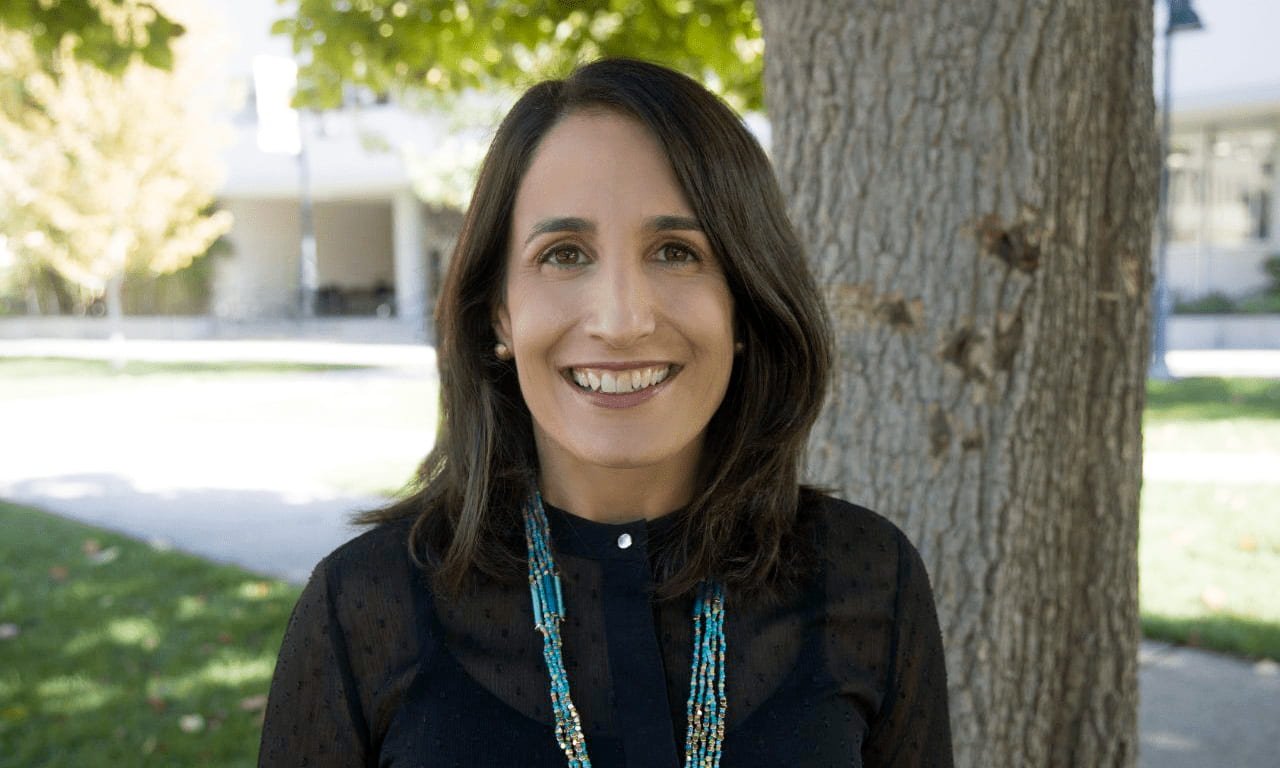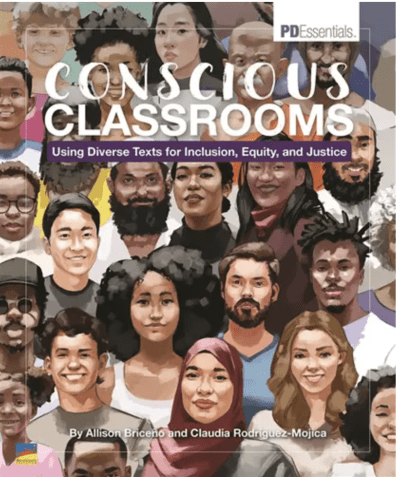Creating Conscious Classrooms: Spotlight on Allison Briceño

San José State Associate Professor of Teacher Education Allison Briceño, ’04 Teaching Credential, is preparing the next generation of culturally conscious educators. Photo courtesy of Allison Briceño.
What’s the difference between selecting a book with diverse characters and choosing a text that encourages anti-racist thought and action? San José State Associate Professor of Teacher Education Allison Briceño, ’04 Teaching Credential, explores innovative ways to diversify curriculum in her new book, “Conscious Classrooms: Using Diverse Texts for Inclusion, Equity, and Justice,” co-written with Claudia Rodriguez-Mojica.

Allison Briceño coauthored “Conscious Classrooms: Using Diverse Texts for Inclusion, Equity, and Justice.”
“We don’t give teachers enough time, in my opinion, to really reflect and ask, ‘Who am I and how does that affect my teaching?’” Briceño asked. “‘What does it mean when I come from a different background from my students?’”
These questions are very close to her heart as a former bilingual elementary school teacher, reading specialist, district literacy coordinator and teaching coach who started her career in Ravenswood City School District in East Palo Alto. Over the years, she noticed the impact of creating culturally sustaining pedagogy (CSP). If an educator is teaching someone who is different from them, in terms of race, sex, gender, nationality, language or any other difference, it is common for the teacher to see those differences as “not normal” or deficits, Briceño explained
“How do we turn those into assets? How do we build on those assets so we are more effective at engaging students, motivating them and finding books that they like? How do we help them take on an assets-based perspective?”
Much of the material in “Conscious Classrooms” is inspired by conversations, research and lessons learned while teaching at San José State. In addition to teaching in the Teacher Education Department, Briceño has contributed to the Critical Bilingual Authorization Pathway programs, also known as Justicia y Bilingüismo. Designed to prepare teachers to teach in dual immersion and bilingual school settings in California, the program is expanding from elementary-only to include high school, single-subject credential authorizations.
Briceño is also revising a master’s program in multilingual and multicultural literacy education to incorporate additional strategies for increasing literacy in multiple languages. According to the 2019 U.S. Census, approximately 44% of people in California over age five speak a language other than English at home, which means the demand for educators qualified to teach in bilingual or multilingual environments continues to grow. She is excited to witness her students become role models in their communities and beyond.
“Our students are amazing and super, super diverse,” she added. “They can go out into the world and be the teachers for kids who have never had a teacher who looks like them. What the general public doesn’t know about teaching is the size of our educators’ hearts. They take the term ‘labor of love’ to a whole new level.”
Related Stories

First-Year Writing Program Presents the Inaugural Digital Literacy Expo

Tyler Yuen Explores Europa (From a Distance)

Deep Dive in Five: The Importance and Value of Accessible Education with SJSU Online Student Jade Steele

